|
|
Laboratory
Our labs are equipped with nanostructure synthesis tools, morphological, electronic,
and chemical characterization under ultrahigh vacuum (UHV) and atmospheric pressure conditions.
System 1: UHV surface science / nanocluster catalysis system (SPECS GmbH).
These modular system consists of four UHV-chambers: a surface analysis chamber, a scanning tunneling microscopy
chamber (variable temperature STM), a sample preparation chamber, and a load
lock chamber for quick sample transfer into UHV. The components that are present in the
chambers are detailed below. Also available: an
overview of the system, a view of the chamber design, and a series of pictures taken during the
installation phase.
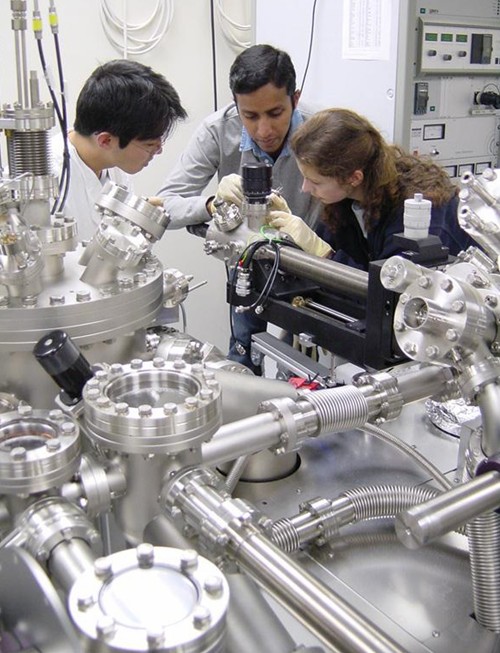 Luis Ono, Abhilash Vincent, and Prof. Roldan
Luis Ono, Abhilash Vincent, and Prof. Roldan
Sample preparation chamber:
- 4-pocket electron beam evaporator with flux monitor (Oxford Sci.) for in-situ metal growth.
- Dual Knudsen-cell evaporator for in-situ growth of bimetallic alloys.
- Quartz microbalance that monitors thickness during evaporation.
- Hybrid atom/ion Plasma source (Oxford Sci.) for H2, O2, N2
à
controlled production of ultrathin metal oxide films and removal of residual organics resulting from ex-situ nanoparticle synthesis.
- Argon sputter gun for sample cleaning.
- Mass spectrometer for rest gas analysis.
Surface analysis chamber:
- Hemispherical electron energy analyzer
- Non-monochromatic (Al/Mg anodes) and monochromatic (Al/Ag anodes) X-ray sources for X-ray Photoelectron Spectroscopy (XPS)
for characterization of chemical composition and electronic properties of nanomaterials.
- Electron source (EQ 22/35, SPECS) for Auger Electron Spectroscopy (AES).
- Ultraviolet Source for Ultraviolet Photoelectron Spectroscopy (UPS).
- Mass spectrometer (HIDEN) for Temperature-Programmed Desorption (TPD).
- Low Energy Electron Diffraction (LEED) for characterazing the crystalline structure of surfaces.
- Gas manifold allowing four different gases and one vaporized liquid to be simultaneously injected into the analysis chamber.
- Nanosecond YAG laser: 355 nm, 532 nm, 1064 nm (EKSPLA) for in-situ nanoparticle melting and re-shaping.
Scanning Tunneling Microscopy chamber:
- Variable Temperature Scanning Tunneling microscope (Aarhus-SPECS)
- Parking station with heating capabilities
- Argon sputter gun for tip cleaning.
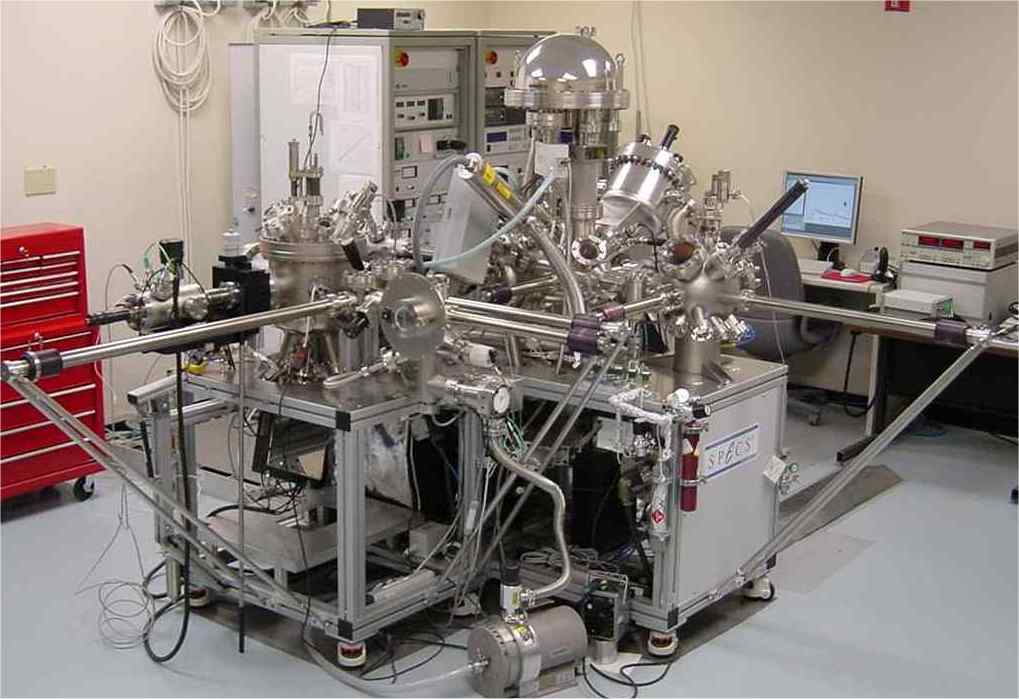
UHV system 1 (SPECS) in Roldan's laboratory.
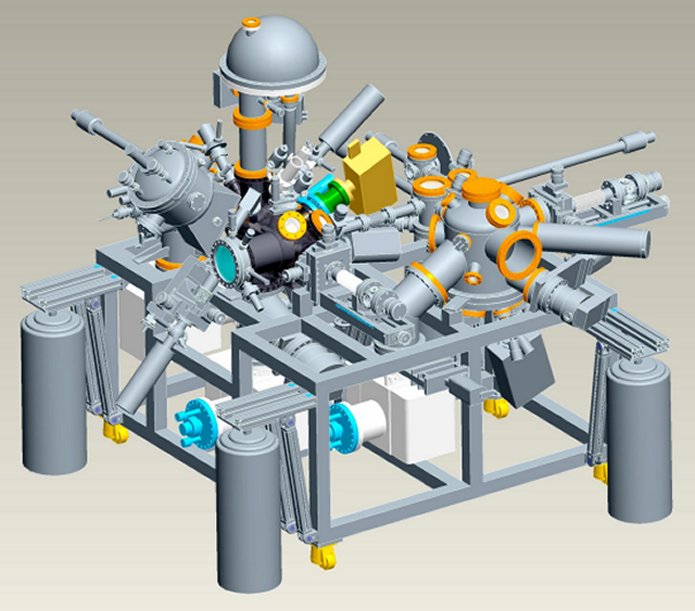
The original system design - a joint effort between Prof. Roldan and SPECS
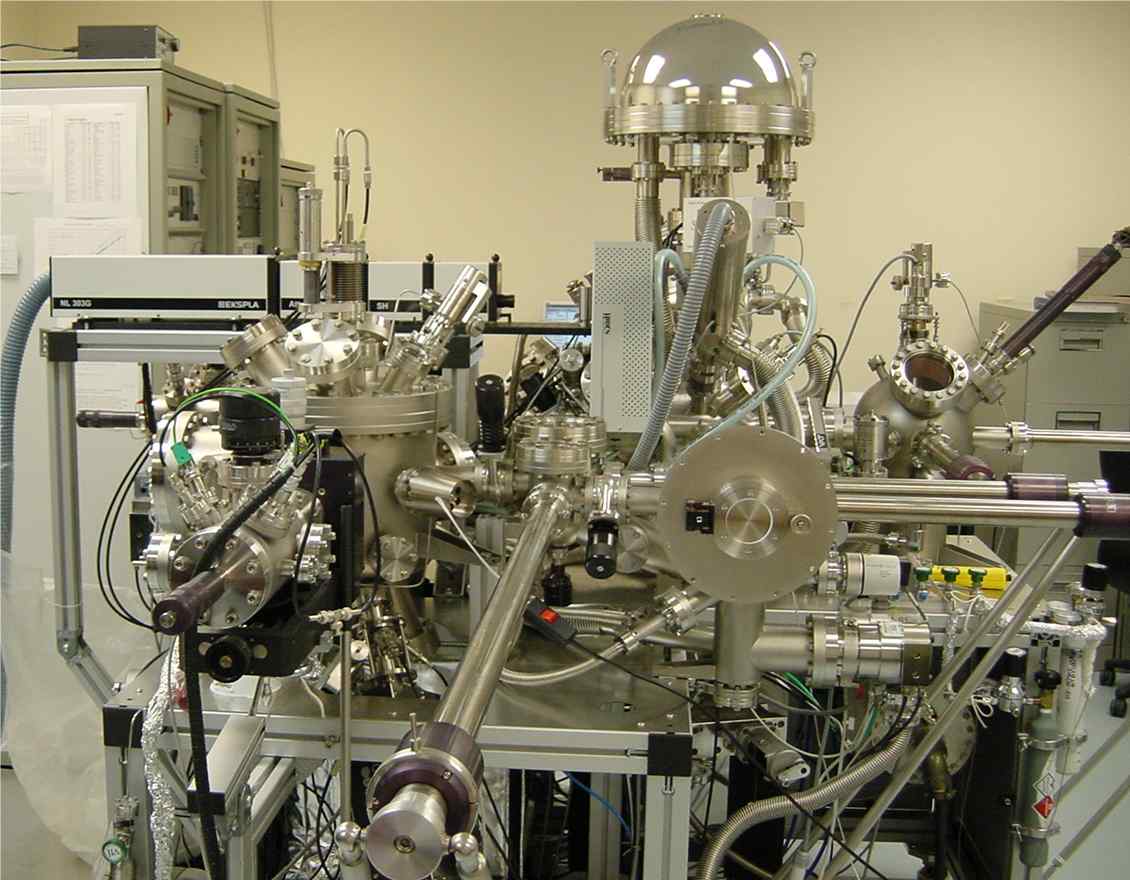
UHV-System 1 featuring in-situ laser-induced nanoparticle re-shaping
System 2: UHV microscopy system
The system includes a room temperature UHV AFM/STM (Omicron) and a load-lock chamber for quick sample transfer.
An in-situ magneto-optic Kerr effect setup for the analysis chamber is under construction.
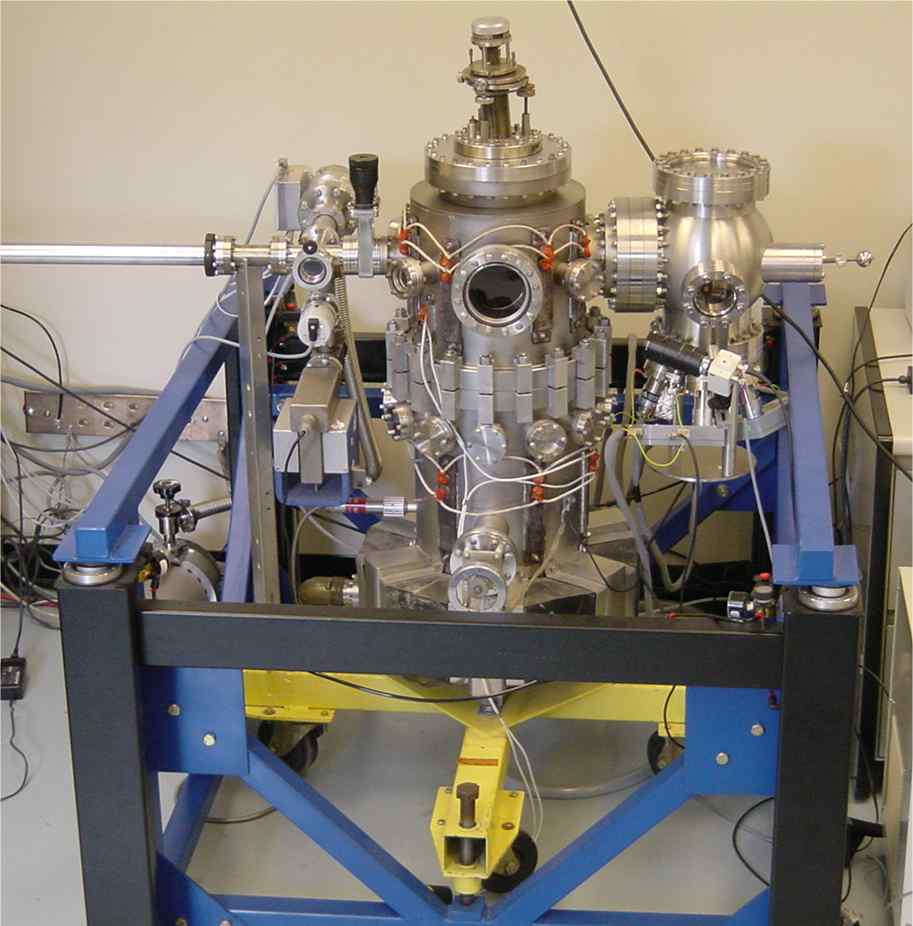
UHV-System 2 installed in Prof. Roldan's lab featuring in-situ AFM/STM
System 3: Microreactor and integrated mass spectrometer system (HIDEN)
A home-built microreactor interfaced with a commercial high pressure mass spectrometer system
is available for the rapid screening of catalytic activity. This system allows real-time
continuous analysis of multiple gas components.
-
Microreactor: gas manifold with independent inlets for four gases and a vaporized liquid (mass flow controlled) and a high temperature quartz reactor column for easy-access catalyst placement with minimal changeover time. The sample temperature can be tuned within the range of ambient to 600ºC and an "in-bed" thermocouple is available.
-
Mass Spectrometer (HPR20, HIDEN): Detection of the gases/vapors used or generated
in the microreactor can be performed with high sensitivity and fast response using a compact bench
top mass spectrometer system (200 amu mass range dual Faraday/Electron multiplier detector) configured for continuous
gas analysis in the pressure range 10 mTorr to 2 bar.
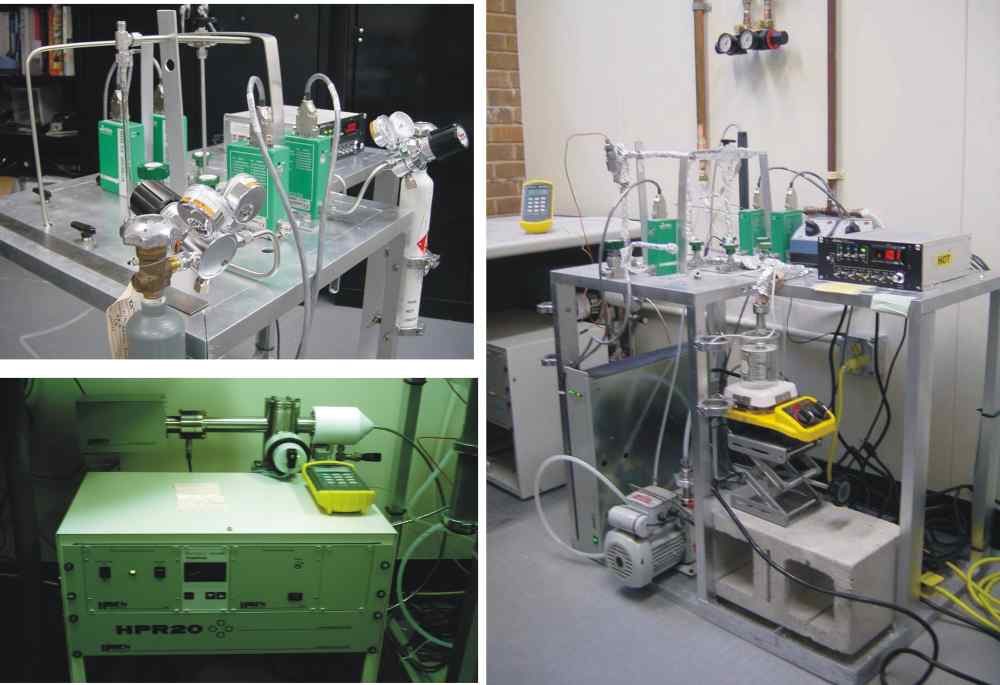
Microreactor with integrated mass spectrometer
|


 Luis Ono, Abhilash Vincent, and Prof. Roldan
Luis Ono, Abhilash Vincent, and Prof. Roldan
